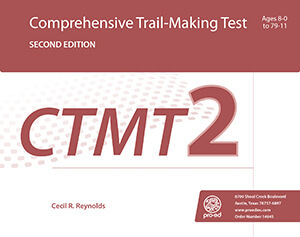CTMT2 is a standardised assessment that uses five visual search and sequencing tasks, called trails, that are heavily influenced by attention, concentration, resistance to distraction, and cognitive flexibility (or set-shifting). The test CTMT2 primary uses include the evaluation and diagnosis of brain injury and other forms of central nervous system compromise. Other purposes include detection of frontal lobe deficits; problems with psychomotor speed, visual search and sequencing, and attention; and impairments in set shifting along with monitoring recovery from concussion and other forms of TBI.
CTMT-2: Comprehensive Trail-Making Test | Second Edition
CTMT-2
CTMT2 is a standardised assessment that uses five visual search and sequencing tasks, called trails, that are heavily influenced by attention, concentration, resistance to distraction, and cognitive flexibility (or set-shifting). The test CTMT2 primary uses include the evaluation and diagnosis of brain injury and other forms of central nervous system compromise. Other purposes include detection of frontal lobe deficits; problems with psychomotor speed, visual search and sequencing, and attention; and impairments in set shifting along with monitoring recovery from concussion and other forms of TBI.Choose from our formats
Kits
Starter & complete kits, print & digital
1 option
Test forms & reports
Booklets, record forms, answer sheets, report usages & subscriptions
1 option
Support materials
Manuals, stimulus books, replacement items & other materials
1 option
All products
All tests and materials offered for CTMT-2
3 options